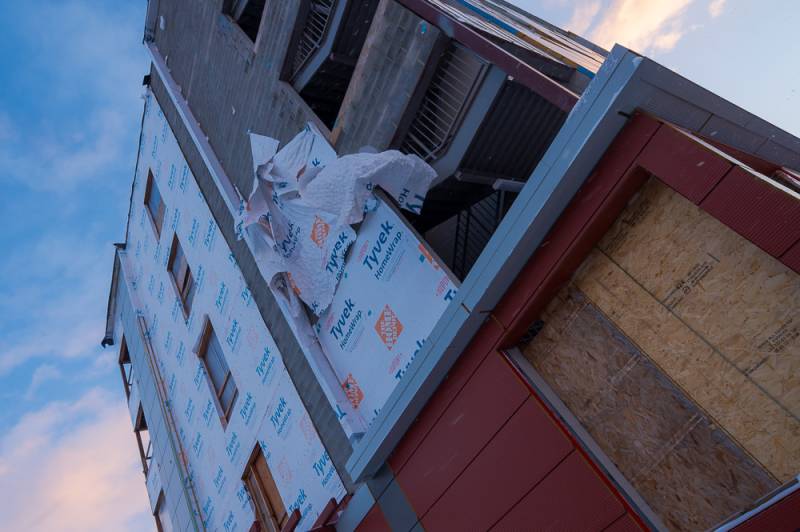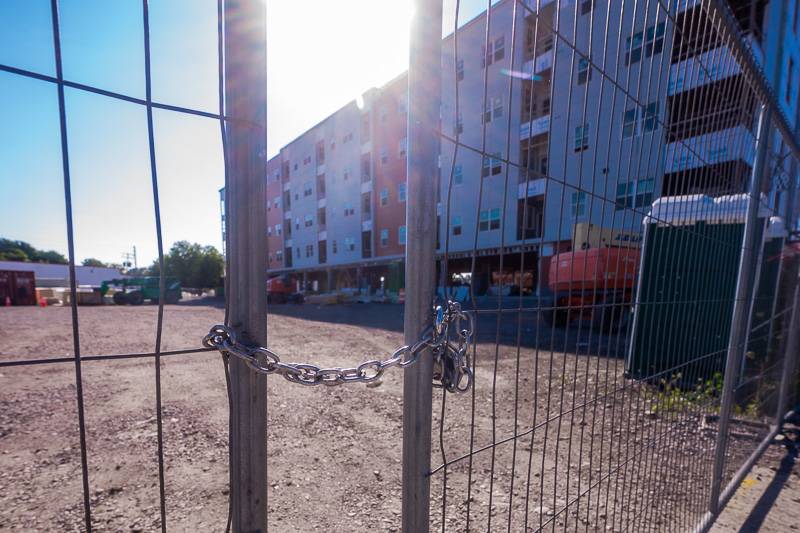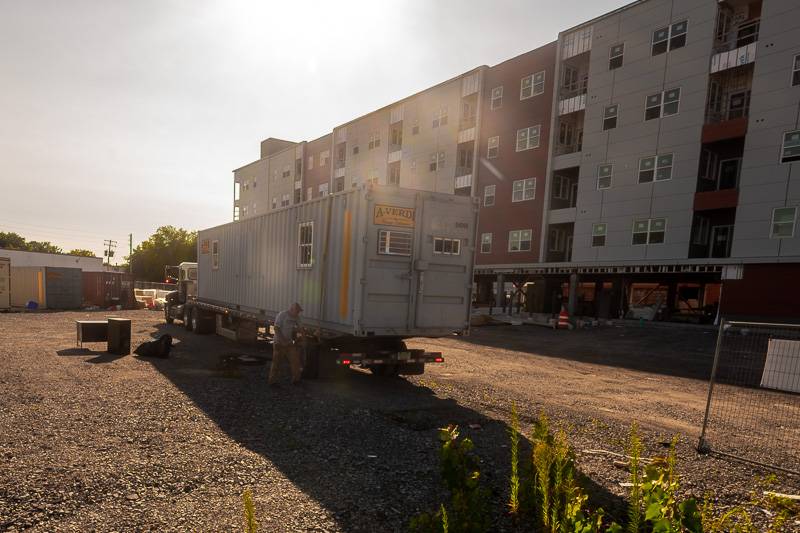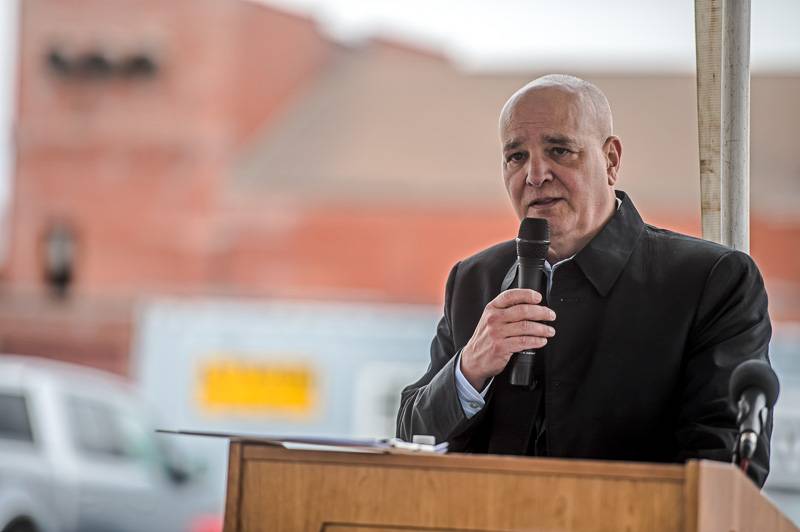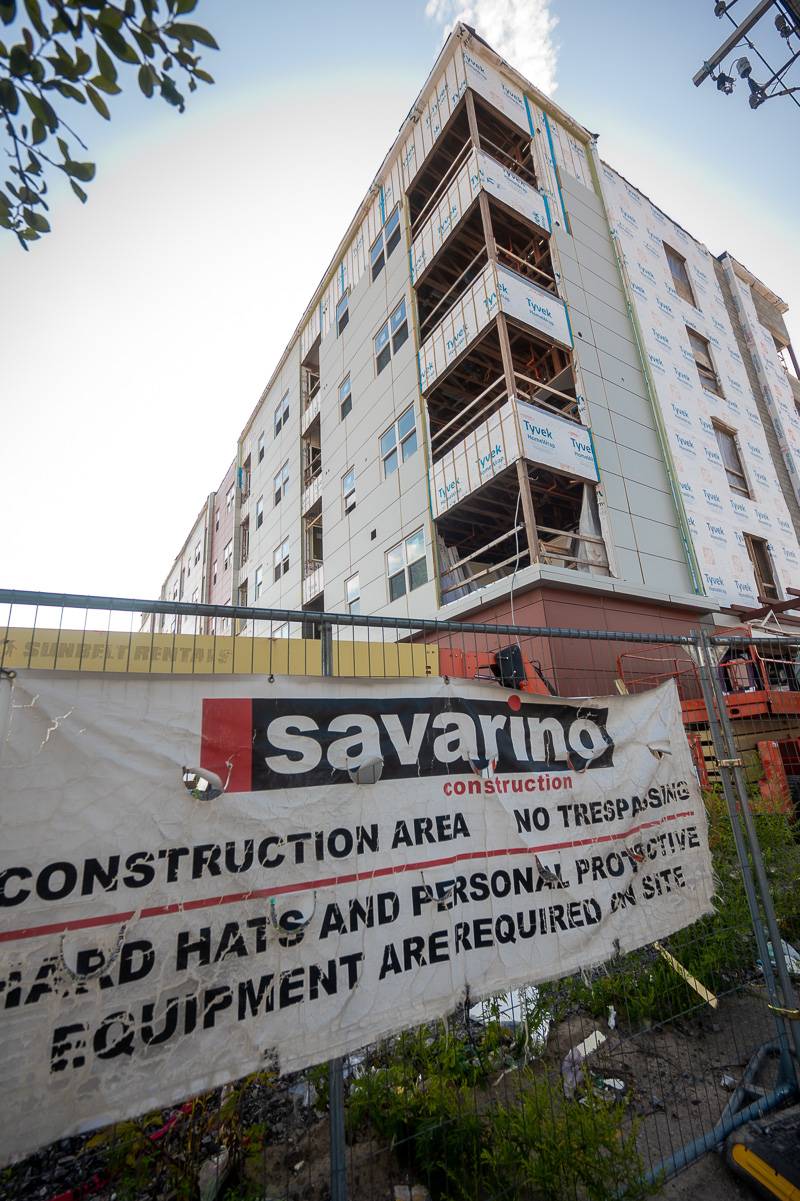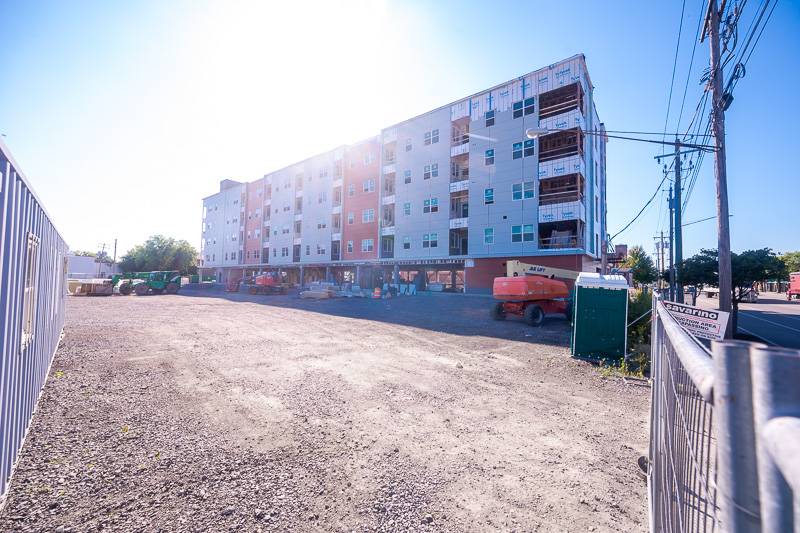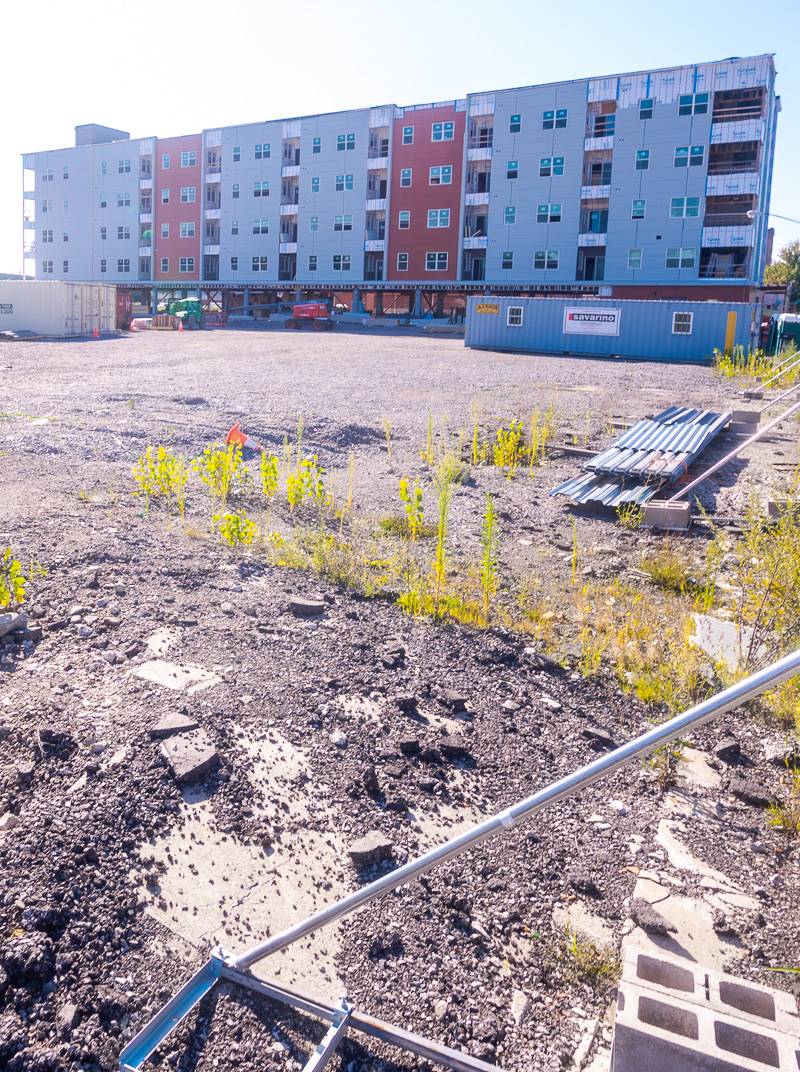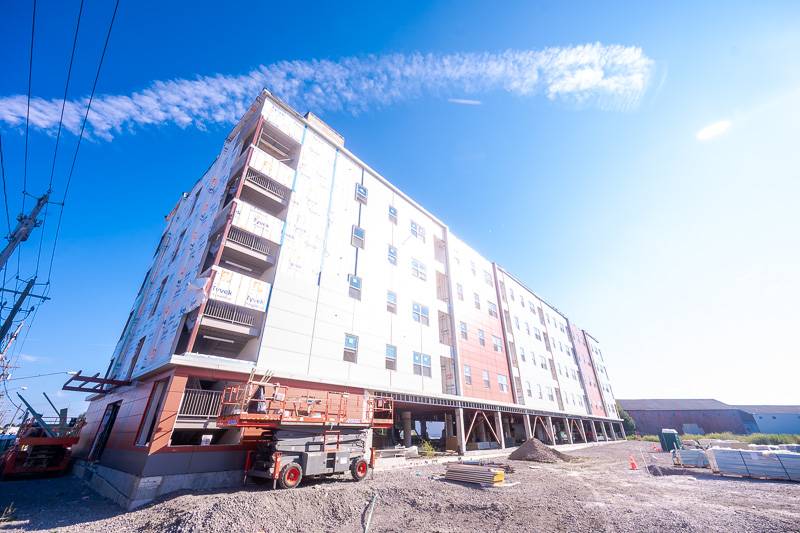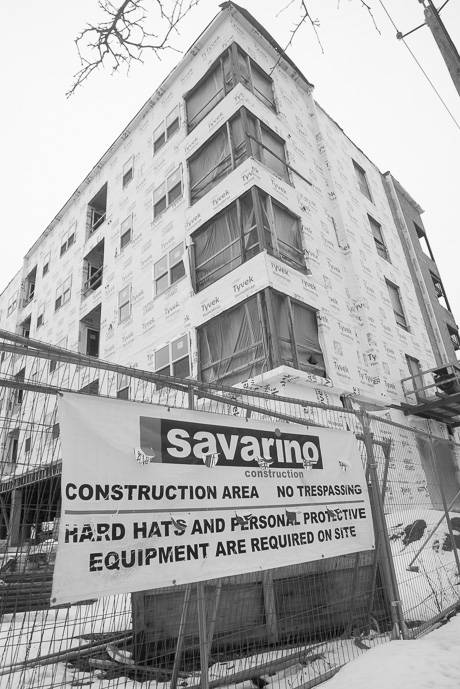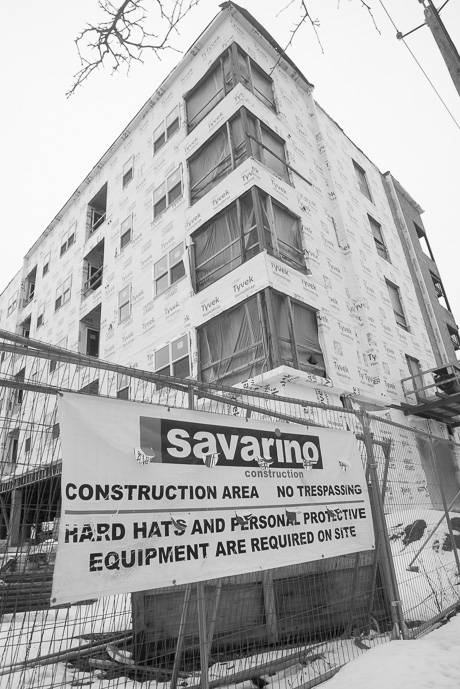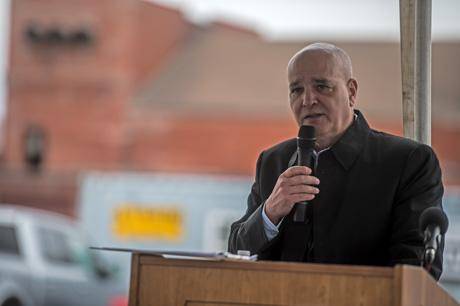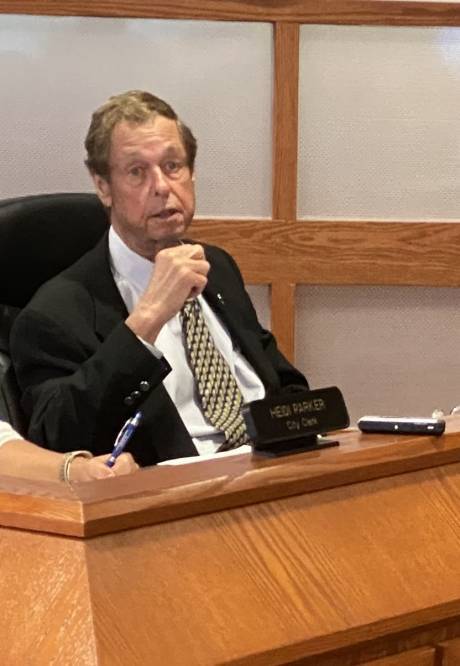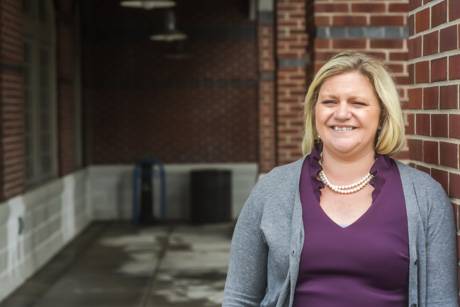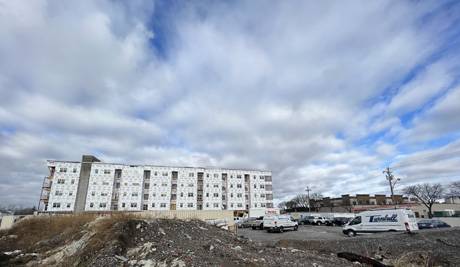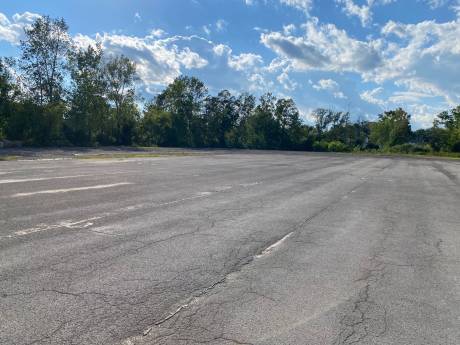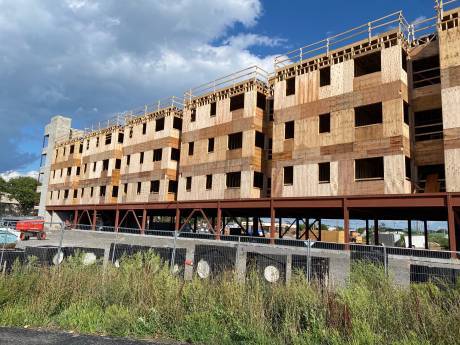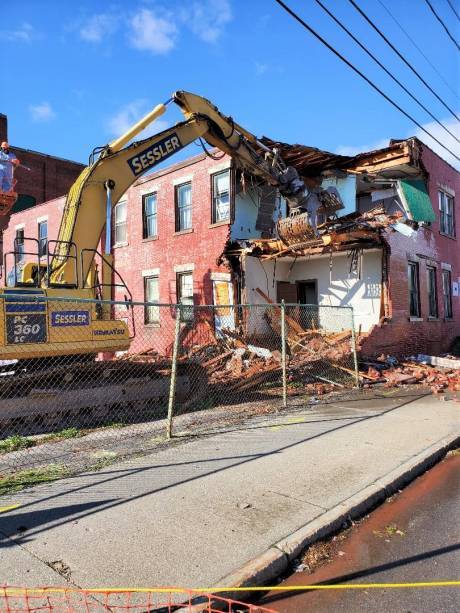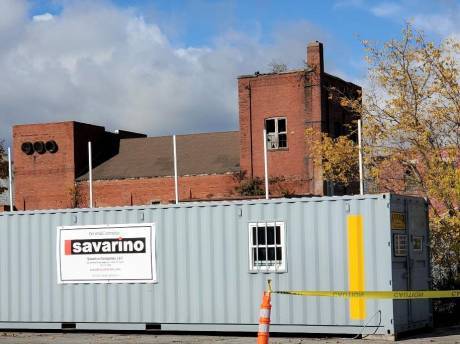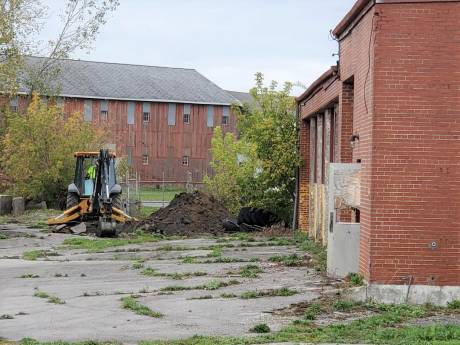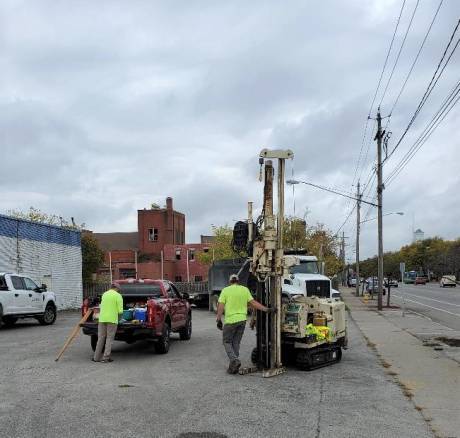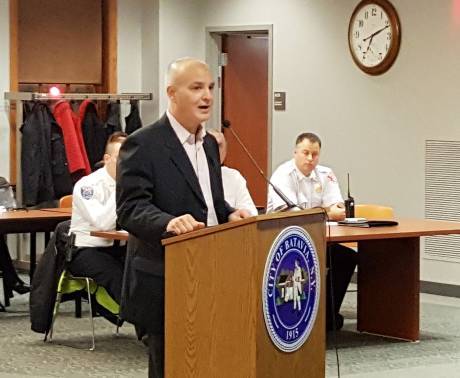Ellicott Station.
The concept was born five years ago when Julie Pacatte, coordinator of the Batavia Development Corp. at the time, introduced Samuel Savarino, chief executive officer of Savarino Cos. of Buffalo, to an excited group of municipal leaders who gathered at the site of the former Santy’s Tire Sales and Soccio & Della Penna construction company on Ellicott Street.
Savarino proceeded to announce that his firm was selected to repurpose the 3-acre parcel in the City of Batavia’s Brownfield Opportunity Area into a development featuring office, retail, residential and entertainment space.
Fast forward to today and one would assume that not much has happened since that March 2016 press conference. To passersby, the location looks the same -- run-down buildings with broken and boarded up windows; an eyesore, to say the least.
Behind the scenes, though, much has taken place. And Savarino, in a telephone interview today with The Batavian, said that the proverbial “light at the end of the tunnel” is in clear view.
Closing Could Happen in May
“I expect there will be a date in May when there will be a closing,” Savarino said.
What that statement means is Savarino believes that New York State Homes and Community Renewal, which is allocating around $5 million in low-income housing tax credits to the project, may be at a point where lawyers can sit down, pull together all of the financial pieces and set the stage for demolition and construction.
“The closing with HCR (is the next step). The day after that we will be out there working; maybe a little bit before that, actually,” he said.
Savarino said the parameters of the venture have not changed.
The $22.5 million project calls for construction of a five-story apartment building with 55 new, modern workforce housing units, as well as a brewery, restaurant/beer garden and potential further development on 3.31 acres. It is expected to create 20 jobs in the city’s downtown area.
Resurgence Not Part of the Brew
He did report, however, that Resurgence, a Buffalo-based brewery, is no longer part of the plan.
“They sort of timed out,” he said. “We’ve got another plan in there for a brewery, and we’ll probably have a hand in operating it.”
Savarino acknowledged that he has heard the grumblings from city officials and others about the time that has elapsed since the initial announcement, but he said he let people know from the beginning that “we had our work cut out for us.”
“I said that it would take quite a while because we had, by our initial calculations, between a $5 million and $8 million gap in funding to make the thing work. There was a lot of work that had to be done to close that,” he said.
“We had one path we were going on with new market tax credits and after a year and a half or two years of heading down a path toward closing, and we were informed by the state that that wouldn’t work.”
Housing Tax Credit a Big Factor
He said his company was able to pursue a different strategy involving the acquisition of low-income housing tax credits.
“We identified the funds and brought them in, and closed the gap and have done what we said -- that we would work hard to do (this) from the beginning. I know that it has taken a lot of time to do it, but we’re on the cusp of beginning construction over there and overcoming the challenges that we had.”
In September of last year, HCR announced an award of $5.7 million in low-income housing tax credits for the project, but since then, that amount has been reduced, Savarino said.
“Part of the delay beside COVID and HCR is that the market had changed. One of the things we needed to have is an investor for the low-income housing tax credits that we have. But because of COVID and other things, the market kind of fell out for things like that,” he advised.
He said the market has recovered to a certain extent – and he has lined up the necessary backing from financial institutions. But that $5.7 million figure is now closer to $5 million.
“We did not get as much in the sale of the credits as we had anticipated, so it’s costing us some money out of our pocket,” he said. “But we made the calculation that even though it is costing us many hundreds of thousands of dollars more, to delay this any further would cost us more still, and that we would be disappointing a lot of people by losing the season and we don’t want to wait any longer.”
Several Funding Sources
The Ellicott Station project will be getting $425,000 from Batavia’s $10 million Downtown Revitalization Initiative award and has been approved for $3.6 million in tax abatements from the Genesee County Economic Development Center. Back in December 2016, it was awarded a $1.9 million Consolidated Application Grant through the Finger Lakes Regional Development Council.
Savarino said that the entire deal closes at the same time.
“There’s funding coming in, there’s private financing that comes into it. So, there’s a lot of moving parts, but it all comes together at a project close. After that, you can start (construction),” he said.
He said that his company has done everything it could to prepare for the financial closing, including required remedial work connected to the Brownfield applications.
“There are literally hundreds of matters that have to be attended to … prior to the closing. The good thing is that we have been at this so long that a lot of those things have been taken care of,” he noted.
But as far as shovels in the ground, nothing yet.
“When we have been notified of any issues, we have done our best to attend to them over there,” he said. “And I think we boarded up some windows and secured the fence a couple of times. I will tell you that I know some people are impatient for some activity on that site.”
Savarino said he hopes to learn the actual closing date with HCR, but realizes that the agency is dealing with many other projects across the state.
“Although we have to seek the permission of HCR to do this, I have said to people in the city that once we know we have a closing date, we can do things like let contracts out for the work and actually have equipment on the site on the day of the closing,” he said.
HCR to Decide When Things Advance
He said his company may be allowed to demolish the old garage and the Santy’s building ahead of or right after closing, but emphasized that HCR is calling the shots.
“We don’t what to get ahead of the state in this – HCR – by announcing when we’re going to start and things like that,” he offered. “Every time we do, we hear from them. We have dealt with them on several other projects. We have done our part to reach the closing, and it’s just a matter of scheduling it.”
Locally, the Batavia Development Corp. continues to be a player in the project, and Andrew Maguire has been the director of economic development for the city-supported agency since November 2019.
“The BDC continues to work with the developer of Ellicott Station -- Savarino Companies,” Maguire said. “The proposed project aligns with Batavia DRI investment strategy and the Batavia Opportunity Area plan to advance redevelopment of strategic sites in the city. Ellicott Station is one of the key sites identified.”
File photo: Sam Savarino addresses City Council, November 2016.
